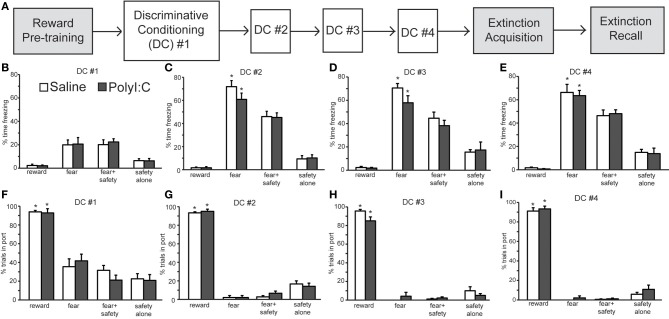Figure 3.
Normal acquisition and performance of a discriminative conditioning task by both polyI:C- (n = 12 from 11 dams) and saline-treated offspring (n = 12 from 10 dams). (A) Schematic of experimental design. Rats were pre-trained on the reward cue-reward pellet association followed by 4 Discriminative Conditioning (DC) sessions in which the reward cue (+reward pellet), fear cue (+footshock), fear+safety cues (no footshock) and safety cue (no footshock) were presented. During Extinction Acquisition all rats received unreinforced presentations of the fear and reward cues. Extinction Recall occurred the next day and consisted of unreinforced presentations of all cues. Data are presented below for the sessions indicated by white boxes. (B–E) Percent time spent freezing during each of the cues are presented for each of the DC sessions (#1–4) for each group. Both groups showed freezing levels that were significantly higher to the fear cue than any other cue during DC #2–4. (F–I) Percentage of trials the rat entered the port for each of the cues are presented for each DC session. Both groups showed significantly more reward seeking during the reward cue than any other cue during the 4 DC sessions. (*p < 0.05, within group analyses).

